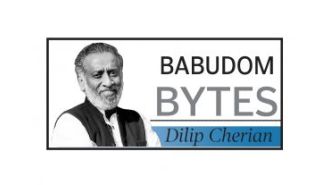The Board Of Directors: Board Meetings
The Board Meeting is the primary way that Boards function. This post is about making Board meetings effective and helpful for everyone involved.
A Board cannot be effective if it doesn't get together frequently. Some Boards meet monthly. I like that approach when the Company is young and there are a lot of changes happening frequently. But for most companies, a monthly Board meeting will be overkill.
I'm a particular fan of the twice a quarter Board meeting. The idea is to have one meeting mid quarter and one meeting after the quarter has been completed. A lot of public companies use this format since the Board needs to review the quarterly numbers before they are reported to the public. I think eight meetings a year is a great heartbeat for a Board and this schedule works well for all kinds of companies.
Some Boards only meet once a quarter. I am on a few Boards that meet face to face once a quarter. I generally encourage those Boards to meet over the phone for an update in between the face to face meetings. Those update calls/meetings are less formal than a full Board meeting but they keep the Board engaged in the business and connecting with each other.
Board meetings should be discussions. They should be interactive. They should have some structure. But they should not have too much structure. Some CEOs and Board Chairs make the mistake of driving the Board line by line through the agenda, cutting off meaty discussions in the name of staying on schedule. The purpose of Board meetings are to have these meaty discussions not to get through the agenda on time.
I prefer that the Board get all "official business" out of the way at the start of the meeting so that the meeting doesn't have to get cut short to approve stock options, minutes, or some other important but perfunctory Board resolution.
Once the Board has done that, the discussions can begin. The CEO should tee up the discussions. There should not be too many topics. I think three or four are good. One or two can be tactical items. But most of the discussion items should be strategic and thorny questions that the business must tackle to be succcessful. Good examples are "what is the ideal business model for our company?", "can we be in two businesses at the same time?", "do we need to build, own, and operate our payments system to be successful long term?", and "can we build a sustainable business long term operating solely on Facebook?". Note that all of these are questions.
Board meetings should last two to three hours. I think two hours is too short. But more than three hours of intense discussion will turn most brains to mush. So you can't go on too long either.
There are a few techniques that I've observed over the years that I like a lot. The first is that the Board deck should be sent out three or four days in advance and it should include all the important financial and operational results for the Board to consume in advance of the meeting. It should also tee up the big discussion items so that the Board can start to think about them in advance of the meeting. The Board does not need to go through a line by line review of the financial and operational results in the meeting. But the CEO or Chairman should ask the Board if there are any questions on the numbers and time should be set aside in the event that the Board would like to have a discussion of the operating results.
The second technique I like a lot is when the CEO puts up a list of the three or four things that are "keeping me up at night" at the start of each meeting. This can be a way of teeing up the discussion items for the meeting. Or it can just be a way for the Board to get into the mind of the CEO quickly. The best way that I've seen this done is the "keeping me up at night" slide shows the items that were on the slide the prior meeting and the items that are on the list currently. That shows what things have been "resolved" in the time since the last meeting, those things that have not been resolved, and the new things that have popped up.
Possibly the most important technique I've observed over the years is the executive session at the end of the meeting. This is when the Board meets without the CEO and team in the room and has a discussion of the meeting and what the key takeaways are. The executive session can be five minutes or it can be a half hour. Sometimes there is very little to discuss in executive session. Sometimes there is a lot. After the executive session ends, the CEO should either be invited back to have a debrief on the executive session or the Chairman of the Board should meet with the CEO to debrief on the executive session. This is an opportunity for the Board to provide feedback to the CEO on the business, the team, and performance, and the strategy. Boards should not miss this opportunity to provide feedback and CEOs should demand it of them.
In summary, Board meetings should not be operational reporting sessions with information flowing one way. They should not be for the benefit of the Board. They should be for the benefit of the CEO and the senior team. I've always loved the idea of a "kitchen cabinet" and to me that is what a great Board meeting should feel like. The Board should be a set of experienced, engaged, and helpful advisors and Board meetings should be a place and a time for that group to provide the most help and assitance they can. It is the CEO and Chairman's job to make sure that happens and it happens on a regular basis.







